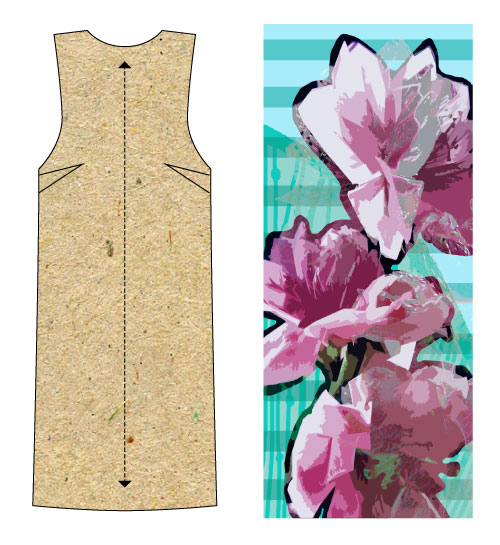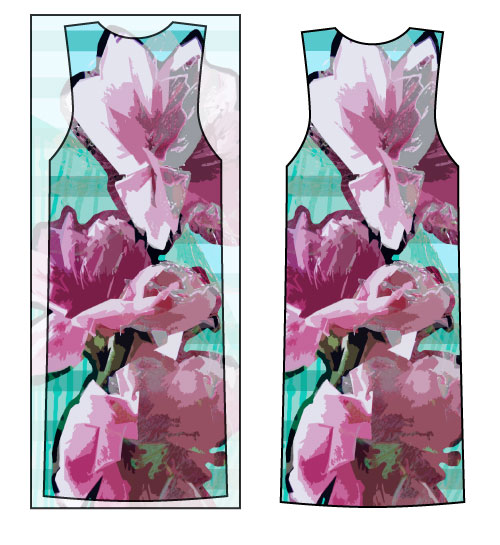A placement or engineered print is the controlled position of an artwork within a product. Different to a repeat print, which features continuous tiling of artwork. A placement print relies on artwork done to the scale of a product and then being cut in a particular position to control the placement of a print.

In Textile design it is a good idea to make sure you know the size of the product, let us say a dress, before you begin the file set-up. In a perfect situation you would be able to fulfil the following steps.
- Have a completed pattern/template of the final product
- Create the artwork for printing based on the scale of that product
- Print the artwork on selected fabric
- Use the pattern/template of the product to engineer the placement of the print, ready for construction.

Many designers have asked me about printing the artwork in the shape of a pattern, I don’t tend to recommend this (unless the pattern is a square or rectangle) as it allows no room for error, what if your pattern ended up being larger than the print, you would have an unprinted gap in the seams of a garment. Further to that placement prints rely heavily on quality cutting to get the position of the print correct. Cutting can be both a timely and costly process and minimising that will assist in the overall manufacture of the product. Individually cutting multiple copies of pattern pieces is best to avoid where possible.
I always recommend keeping placement print patterns within the shape of a square or rectangle. This means you can cut a large volume of the shapes out and stack them on top of each other before cutting the shape of the pattern. It will also allow for a printer to maximise the use and economy of the fabric.

